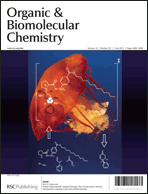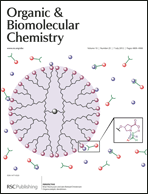NEW COMPOUND COULD BECOME “COOL BLUE” FOR ENERGY EFFICIENCY IN BUILDINGS
CORVALLIS, Ore. – A new type of durable, environmentally-benign blue pigment discovered at Oregon State University has also been found to have unusual characteristics in reflecting heat – it’s a “cool blue” compound that could become important in new approaches to saving energy in buildings.
The compound, which has now received patent approval, was discovered about three years ago almost by chance, as OSU scientists were studying some materials for their electrical properties.
Its potential use to help reduce heat absorption on the roofs and walls of buildings – which is an evolving field of considerable interest in warm regions where cooling is a major expense – adds another role for the material, which is now being considered for various commercial applications.
“This pigment has infrared heat reflectivity of about 40 percent, which is significantly higher than most blue pigments now being used,” said Mas Subramanian, an OSU professor of chemistry who discovered the compound.
“The more we discover about the pigment, the more interesting it gets,” Subramanian said. “We already knew it had advantages of being more durable, safe and fairly easy to produce. Now it also appears to be a new candidate for energy efficiency.”
“Cool roofing,” in which paints are used to reflect significant portions of the sun’s heat and thereby reduce cooling costs, is an important new trend in “green” construction and energy efficiency, experts say. Such reflective coatings also are more aesthetically pleasing, have less thermal degradation, reduce the “heat island” effect in cities, lower peak energy demand, and reduce air pollution due to lower energy use and power plant emissions.
“We’re seeking licensing partners for this invention right now,” said Mary Phillips, associate director of the Office for Commercialization and Corporate Development at OSU. “We believe it can contribute to new energy efficiency solutions around the world.”
In general, any darker color of the type often used for roofs, houses, automobiles or other applications will tend to absorb more heat. But some compounds, like the one discovered at OSU, have dark tones but also the ability to reflect heat in the infrared spectrum, which is responsible for most of the heat energy absorbed from sunlight.
The material created at OSU, researchers say, is probably the best blue pigment humans have produced since ancient times – going back to efforts by the Egyptians, the Han dynasty in China and Mayan cultures. Blue pigments have been sought through history but often had serious drawbacks, such as decaying quickly, being toxic, costly or carcinogenic.
In research funded by the National Science Foundation, OSU scientists discovered this material by coincidence while they were looking for something else.
Some manganese compounds came out of a 2,000 degree Fahrenheit oven transformed into a beautiful blue, which researchers later determined was due to an unusual “trigonal bipyramidal coordination” of their molecules that changed when exposed to extreme heat.
Research will continue at OSU on the heat reflectance capabilities of the new compound and the underlying molecular structure responsible for it, scientists said.
About the OSU College of Science: As one of the largest academic units at OSU, the College of Science has 14 departments and programs, 13 pre-professional programs, and provides the basic science courses essential to the education of every OSU student. Its faculty are international leaders in scientific research.
Researchers at Oregon State University have discovered a chemical compound, a “cool blue” pigment that has notable heat reflecting properties that could lead to new approaches to saving energy in buildings.
The patent-approved compound could be used to develop roofing paint and other products that would reduce heat absorption.
“The pigment has infrared heat reflectivity of about 40 percent, which is significantly higher than most blue pigments now being used,” said Mas Subramanian, the OSU professor of chemistry who discovered the compound, in a press release.
Subramanian said the pigment is also safe, durable and relatively easy to produce.
Mary Phillips, associate director of OSU’s office for commercialization and corporate development, said the university is looking for licensing partners to develop the compound into products.
“We believe it can contribute to new energy efficiency solutions around the world,” Phillips said.
OSU said the manganese compound — molecules transformed by a 2,000-degree Farenheit oven into a beautiful blue — was discovered in research funded by the National Science Foundation.
Researchers say it’s probably the best blue pigment humans have produced since ancient times – going back to efforts by the Egyptians, the Han dynasty in China and Mayan cultures. Blue pigments have been sought through history but often had serious drawbacks, such as decaying quickly, being toxic, costly or carcinogenic.
A new type of durable, environmentally-benign blue pigment discovered at Oregon State University (OSU) has also been found to have unusual characteristics in reflecting heat – it’s a “cool blue” compound that could become important in new approaches to saving energy in buildings.
The compound, which has now received patent approval, was discovered about three years ago almost by chance, as OSU scientists were studying some materials for their electrical properties.
Its potential use to help reduce heat absorption on the roofs and walls of buildings – which is an evolving field of considerable interest in warm regions where cooling is a major expense – adds another role for the material, which is now being considered for various commercial applications.
“This pigment has infrared heat reflectivity of about 40 per cent, which is significantly higher than most blue pigments now being used,” said Mas Subramanian, an OSU professor of chemistry who discovered the compound.
“The more we discover about the pigment, the more interesting it gets,” Subramanian said. “We already knew it had advantages of being more durable, safe and fairly easy to produce. Now it also appears to be a new candidate for energy efficiency.”
“Cool roofing,” in which paints are used to reflect significant portions of the Sun’s heat and thereby reduce cooling costs, is an important new trend in “green” construction and energy efficiency, experts say. Such reflective coatings also are more aesthetically pleasing, have less thermal degradation, reduce the “heat island” effect in cities, lower peak energy demand, and reduce air pollution due to lower energy use and power plant emissions.
“We’re seeking licensing partners for this invention right now,” said Mary Phillips, associate director of the Office for Commercialisation and Corporate Development at OSU. “We believe it can contribute to new energy efficiency solutions around the world.”
In general, any darker colour of the type often used for roofs, houses, automobiles or other applications will tend to absorb more heat. But some compounds, like the one discovered at OSU, have dark tones but also the ability to reflect heat in the infrared spectrum, which is responsible for most of the heat energy absorbed from sunlight.
The material created at OSU, researchers say, is probably the best blue pigment humans have produced since ancient times – going back to efforts by the Egyptians, the Han dynasty in China and Mayan cultures. Blue pigments have been sought through history but often had serious drawbacks, such as decaying quickly, being toxic, costly or carcinogenic.
In research funded by the National Science Foundation, OSU scientists discovered this material by coincidence while they were looking for something else.
Some manganese compounds came out of a 1 093-degree Celsius oven transformed into a beautiful blue, which researchers later determined was due to an unusual “trigonal bipyramidal coordination” of their molecules that changed when exposed to extreme heat.
Research will continue at OSU on the heat reflectance capabilities of the new compound and the underlying molecular structure responsible for it, scientists said.
 The front cover of this week’s issue highlights the work of Rich G. Carter, Oregon State University, and colleagues. In this paper Carter et al. present the development of a proline sulphonamide-catalysed method that facilitates the annulation of α-aryl, α-alkyl-disubstituted aldehydes with acyclic enones to produce highly functionalized cyclohexenones with very good degrees of diastereoselectivity and enantioselectivity.
The front cover of this week’s issue highlights the work of Rich G. Carter, Oregon State University, and colleagues. In this paper Carter et al. present the development of a proline sulphonamide-catalysed method that facilitates the annulation of α-aryl, α-alkyl-disubstituted aldehydes with acyclic enones to produce highly functionalized cyclohexenones with very good degrees of diastereoselectivity and enantioselectivity.